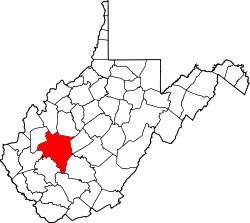This article relies largely or entirely on a single source .(November 2023) |
East Side, West Virginia | |
|---|---|
| Coordinates: 38°21′15″N81°38′26″W / 38.35417°N 81.64056°W | |
| Country | United States |
| State | West Virginia |
| County | Kanawha |
| Elevation | 591 ft (180 m) |
| Time zone | UTC-5 (Eastern (EST)) |
| • Summer (DST) | UTC-4 (EDT) |
| GNIS ID | 1554356 [1] |
East Side is an unincorporated community in Kanawha County, West Virginia, United States.


